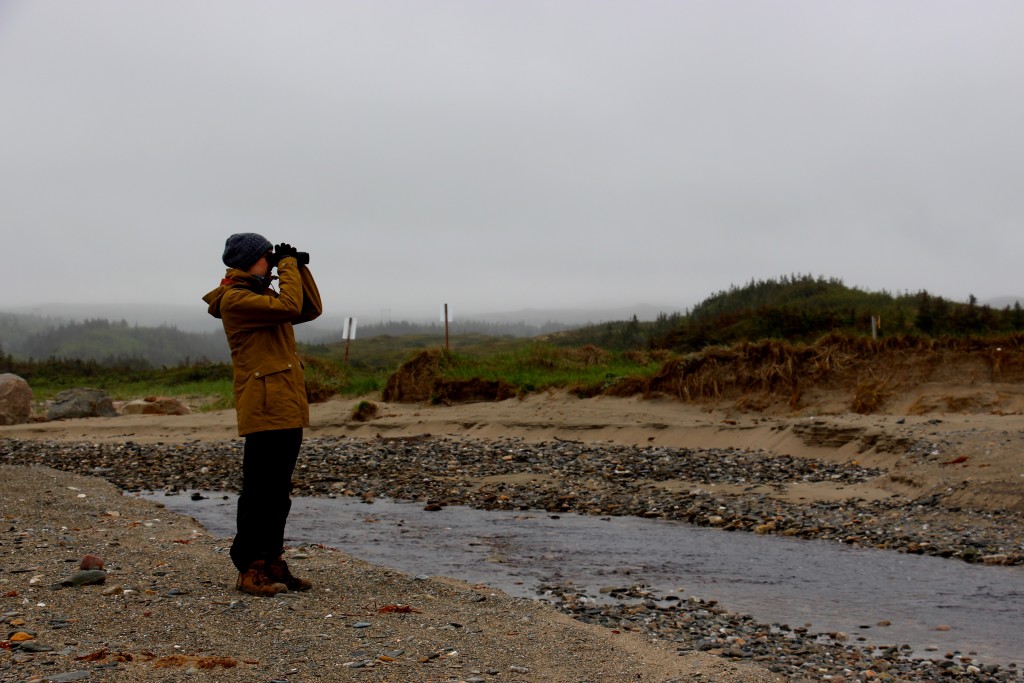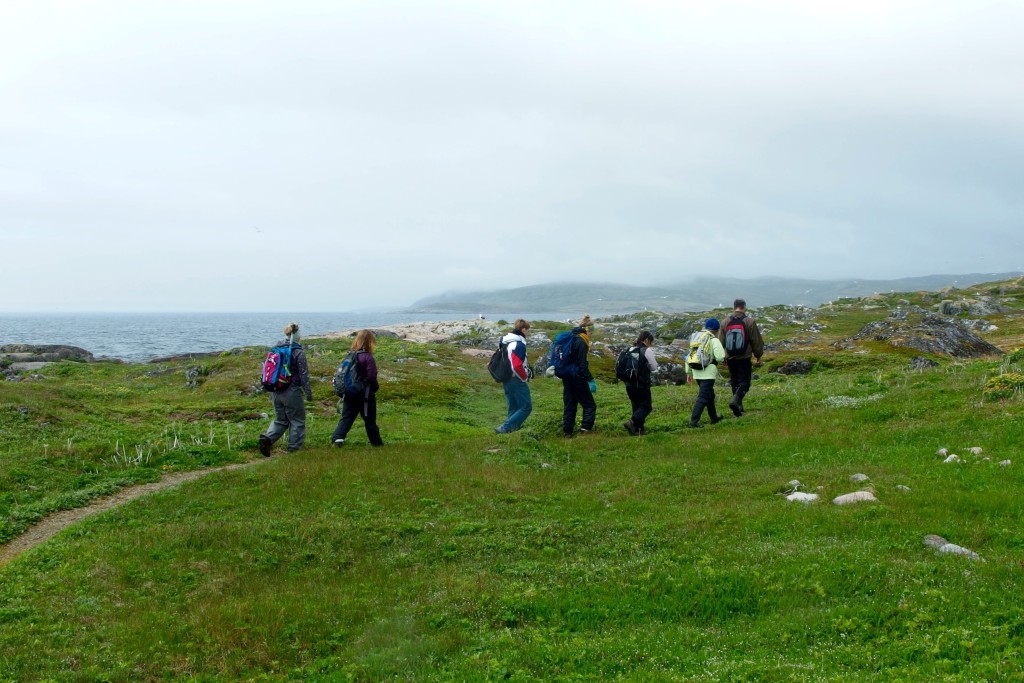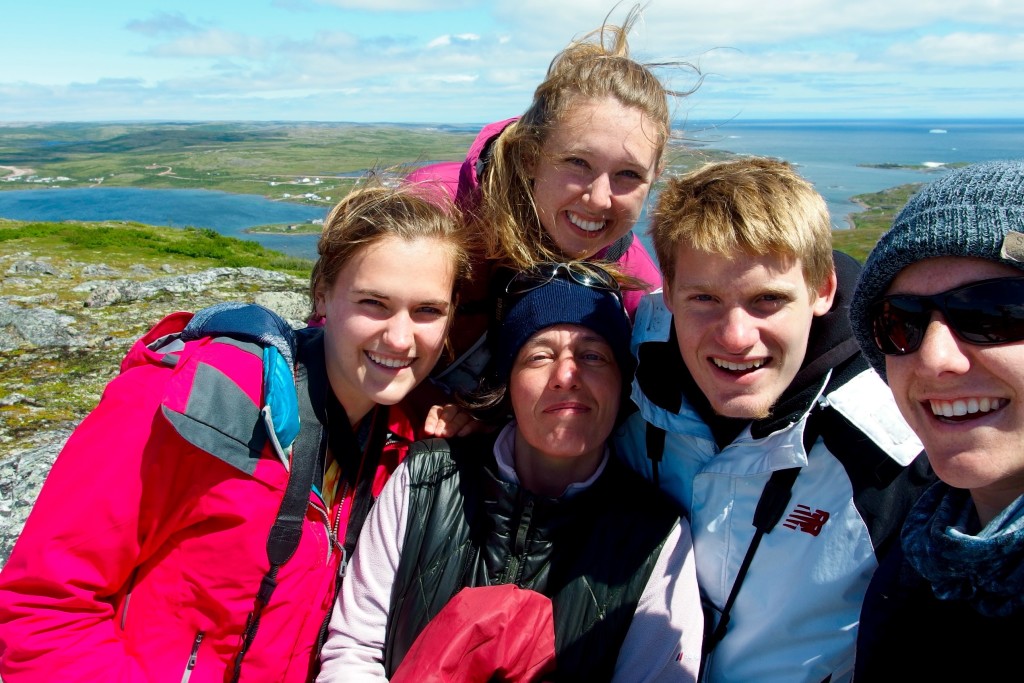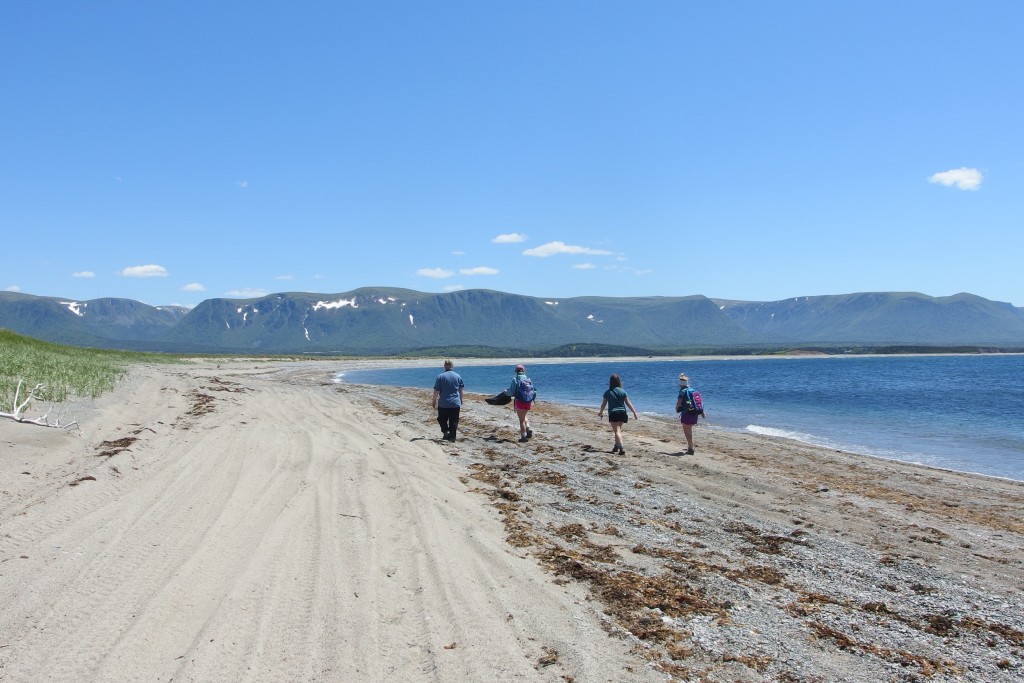QLF recruits Interns (university students) and Volunteers (high school seniors) from academic institutions throughout New England and Atlantic Canada.
- In 2015, two dozen Interns hailed from eleven universities, namely: Brown University; Colgate University; Dalhousie University; McGill University; Princeton University; Skidmore College; St. Lawrence University; Stanford University; Université de Montréal; and Brooks School (MA).
- Fourteen Interns/Volunteers participated in the Internship Program in Newfoundland and Labrador;
- Ten Interns/Volunteers worked in one of QLF’s two offices.

Managed by Dr. Kathleen Blanchard, QLF’s Internships in Newfoundland and Labrador provide students with a unique opportunity in environmental education and community-based conservation that enables them to exercise their own capacity for environmental leadership, engage with community members on relevant environmental challenges, and advance the recovery of species-at-risk. The Internship Program in Atlantic Canada is modeled after the signature Marine Bird Conservation Program, established by Dr. Blanchard over thirty years ago.
- In 2015, QLF Interns worked in fifteen communities throughout Newfoundland, Labrador, and the Quebec North Shore.
During the six-week Conservation Leadership Program, Interns working with Dr. Blanchard organized environmental education workshops for youth on marine conservation, mitigating the effects of marine debris, and marine species-at-risk. Interns monitored local seabird and sea duck populations by actively checking nests for disturbance.
- Interns work in a number of different locations, namely: Hare Bay Islands Ecological Sanctuary, Main Brook, the Great Northern Peninsula, Newfoundland; the Codroy Valley, Southwestern Newfoundland; Red Bay UNESCO Site, Red Bay, Labrador; L’Anse Amour, Southern Labrador; and Blanc Sablon, Quebec North Shore.
- Interns monitor and highlight at-risk marine species during youth workshops and projects, including: Common Eider, Common and Arctic Tern, Caspian Tern, Ring-billed Gull, Herring Gull, Great Black-backed Gull, Razorbill, Atlantic Puffin, and Black Guillemot.
- In 2015, Interns organized fifteen workshops. An average of twenty-five youth, young adults, and community members attended each workshop.
- Interns organized a bird-a-thon for youth and community members in Main Brook, Newfoundland.
- Interns stationed in Red Bay contributed to an educational exhibit on Natural history Interpretation at the Visitor Interpretation Center, Red Bay Basque Whaling Station, a UNESCO World Heritage site.
- In past years, Interns constructed cavity-nesting boxes for Common Eiders.
“The following Tuesday, Kathleen and I left Main Brook and took the ferry to Labrador to start monitoring seabirds and to talk with local people about future birding workshops that we will organize in Labrador. I soon realized how helpful and committed people in local communities are to conservation projects, as many of them offered their help with the workshops. Finally, on Saturday I helped the Canadian Wildlife Service count Atlantic Puffin, Razorbill, Gull, and Common Murre nests on Perroquet Island in Blanc Sablon. It was a wonderful experience. I learned many things about seabird colonies, including how to estimate the size of their populations.” (Mégane Déziel, 2015 Piping Plover Conservation Project Intern)
2015 was the third year of the Piping Plover Conservation Project. The six-week Internship provides students with the opportunity to conduct fieldwork on local Piping Plover populations and engage in hands-on, community-based initiatives to protect the endangered species.
- Interns on the Piping Plover Conservation Project work primarily in the Codroy Valley, Southwest Newfoundland.
- Fieldwork comprises monitoring beaches for Piping Plovers; collecting data on the bird populations; entering data into a database; and, in past years, building nest shelters.
- In recent years, Interns have monitored fourteen pair of Piping Plover in the Codroy Valley. In 2015, Interns regularly monitored ten beaches in for Piping Plovers.
- Additionally, Interns engage actively with local populations about Piping Plovers and the importance of maintaining clean beaches and minimizing harmful recreational activity. Interns post signs on the beaches to encourage awareness.
“Other highlights of the week included teaching a first grade class from Port Aux Basques about the importance of the piping plover and conservation in their area. We taught them the call of the piping plover, told the story of Gaspar, demonstrated how to use binoculars, and had the children build model nests out of sand. They loved learning about the plovers and at the end of the presentation helped us brainstorm ways to become better beach stewards. This is the future generation of the Codroy Valley and we want to ensure that they value the plover as much as we do.” (Adrean Ojoleck, Anna Maritz, Liz Wallace, and Mia Thomas, 2015 Piping Plover Conservation Project Interns)

In 2015, Interns participating in both the Piping Plover Conservation Project and the Conservation Leadership Program partnered up with regional organizations, community members and fishermen to clean beaches of hundreds of pounds of trash and marine debris, specifically bait box liners.
- QLF worked with multiple partners on this endeavor, including Junior Canadian Rangers.
- Marine debris, including bait box liners that fishermen cast overboard have a detrimental impact on marine species, shorebirds, and humans, particularly in the Labrador Straits.
- Through community-based conservation, QLF and Interns engage with local fishermen to bring attention to and mitigate the issue. Fishermen in the Labrador Straits are working to amend their gear and develop more sustainable disposal practices for the protection of marine inhabitants and users.
Interns participating in both Internship Programs have written articles for the Great Northern Peninsula’s Northern Pen detailing the outcomes of QLF’s youth workshops.
In 2015, all thirteen Interns who participated in the Atlantic Canada Leadership Program cited that they came away from the Internship with more knowledge about recovery of species at risk.
- One Intern came to recognize that “recovery of a species at risk is a lengthy process [that] takes time and commitment.”
- Another Intern learned through the experience that “education is crucial and reaching out to community members and everyday citizens is the best way to get your message out.” This was echoed by several other Interns.
“I think working collaboratively, as we did for the majority of the summer, is much more effective for most conservation projects such as the youth leadership program. I think the various programs we offered were successful because they were a combination of all of the interns’ best ideas.” (Anna Maritz, 2015 Piping Plover Conservation Intern)

Each year, another group of Interns work in QLF’s Ipswich and Montreal offices on a variety of aspects of nonprofit work, including communications, program development and implementation, publications, social media and marketing, and data management.
- In 2015, two Interns worked on developing QLF’s newest exchange program, the Southeast Asia Exchange program.
- Two Interns worked on QLF’s Sounds Conservancy Marine program established to protect the Sounds and coastal waters of southern New England and New York.
- Several Interns were placed to work on the Global Leadership Network, QLF’s Network of more than 5,000 Alumni representing 75 countries and six global regions.
- One component of this effort was conducting interviews with fifty QLF Alumni and writing articles outlining their exceptional career paths and QLF’s last impacts on its Alumni.
- In 2016, Interns are focusing their attention on organizing QLF’s second Alumni Congress, as well as continued efforts in communications, the Global Leadership Network, social media and marketing, and data management.
In their own words, former office Interns have lauded QLF internships for teaching them about communications, management, networking, facilitation, coordinating, planning, strategizing, marketing, writing, messaging, and NGO organization.
QLF’s Leadership Program has a transformative impact on university students.
- Year after year, QLF Interns come away from their summer Internships with a newfound appreciation for community-based conservation and a clearer vision of how they want to approach environmental challenges in order to make positive change in the world.
- QLF Interns move into the next phase of their developing careers with stronger leadership skills and a greater sense of direction.
“It is quite powerful to recognize that despite other contentious differences, all human beings have a connection and reliance on the earth. If we can recognize this common ground, there is a radical potential to not only preserve the planet, but also alter the way that people interact with one another. As someone who comes from a background in political science, this summer has been a chance to incorporate my academic interests while revisiting a life-long passion for the environment. QLF has shown me that it takes a lot more than scientists to advocate for our planet and I plan to make that a cornerstone of my future work.” (Katy Litka, 2015 Southeast Asia Exchange Program Intern)







